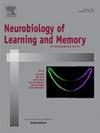Modelling the acquisition of Pavlovian conditioning
IF 2.2
4区 心理学
Q3 BEHAVIORAL SCIENCES
引用次数: 0
Abstract
Pavlovian conditioning is a fundamental learning process that allows animals to anticipate and respond to significant environmental events. This review examines the key properties of the relationship between the conditioned stimulus (CS) and unconditioned stimulus (US) that influence learning, focussing on the temporal proximity of the CS and US, the spacing of trials (pairings of the CS and US), and the contingency between the CS and US. These properties have been touchstones for models of associative learning. Two primary theoretical approaches are contrasted here. Connection strength models, exemplified by the Rescorla-Wagner model (Rescorla & Wagner, 1972), describe learning as trial-by-trial changes in the strength of an associative bond based on prediction errors. In time-based models of learning (e.g., Gallistel & Gibbon, 2000) animals encode and remember temporal intervals and rates of reinforcement. The integration of Information Theory into time-based models (Balsam & Gallistel, 2009) provides a mathematical framework for quantifying the effects of proximity, trial spacing, and contingency in terms of how much the CS reduces uncertainty about the US. The present paper incorporates a trial-by-trial Bayesian updating process into the information theoretic account to describe how uncertainty about the CS-US interval changes across conditioning. This Bayesian process is shown to account for empirical evidence about the way that responding changes continuously over conditioning trials.
巴甫洛夫条件反射习得的建模
巴甫洛夫条件反射是一种基本的学习过程,它使动物能够预测并对重大环境事件做出反应。本综述探讨了条件刺激(CS)和非条件刺激(US)之间影响学习的关系的关键特性,重点关注CS和US的时间接近性、试验间隔(CS和US的配对)以及CS和US之间的偶然性。这些特性一直是联想学习模型的试金石。这里对比了两种主要的理论方法。连接强度模型,以Rescorla- wagner模型(Rescorla &;Wagner(1972)将学习描述为基于预测误差的联想纽带强度的一次又一次的变化。在基于时间的学习模型中(例如,Gallistel &;Gibbon, 2000)动物编码并记忆时间间隔和强化率。信息论与基于时间的模型的整合(Balsam &;Gallistel, 2009)提供了一个数学框架,用于量化接近性、试验间隔和偶然性的影响,即CS在多大程度上减少了美国的不确定性。本文将逐次贝叶斯更新过程引入信息论,以描述CS-US区间的不确定性如何随条件的变化而变化。这个贝叶斯过程被证明可以解释反应在条件反射试验中不断变化的经验证据。
本文章由计算机程序翻译,如有差异,请以英文原文为准。
求助全文
约1分钟内获得全文
求助全文
来源期刊
CiteScore
5.10
自引率
7.40%
发文量
77
审稿时长
12.6 weeks
期刊介绍:
Neurobiology of Learning and Memory publishes articles examining the neurobiological mechanisms underlying learning and memory at all levels of analysis ranging from molecular biology to synaptic and neural plasticity and behavior. We are especially interested in manuscripts that examine the neural circuits and molecular mechanisms underlying learning, memory and plasticity in both experimental animals and human subjects.

 求助内容:
求助内容: 应助结果提醒方式:
应助结果提醒方式:


